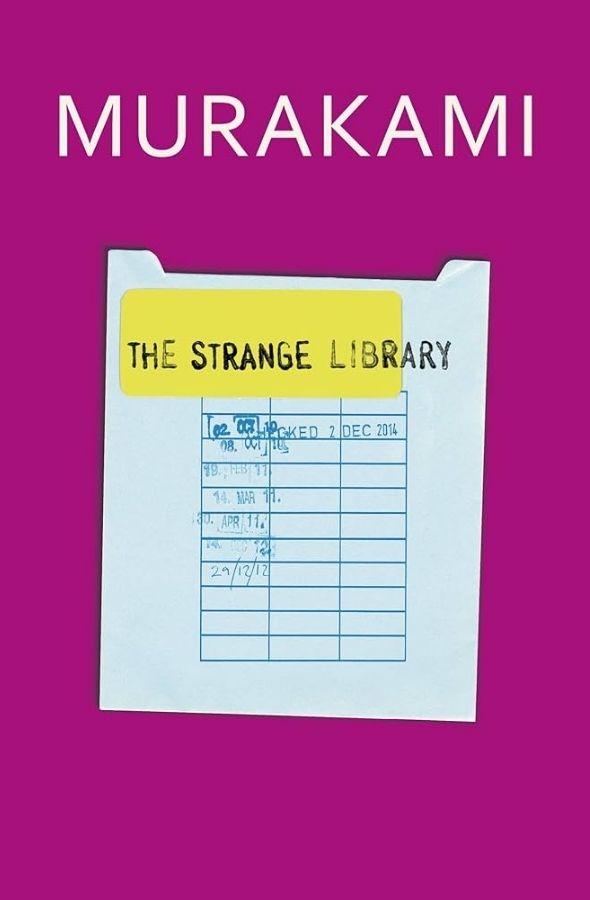Murakami is an author who has grown on me. I have many of his acclaimed novels and non-fiction works resting on my bookshelf, but I have yet to read most of them because Murakami is an author that requires you to be in a certain mood—an attentive, glum, and thoughtful one.
Because I cannot get myself into the right mood for a lengthy Murakami read, I sought out his very short novella The Strange Library, to see what a talented and interesting author can do with so few pages.
The story of this novella centres around a schoolboy being trapped within the labyrinthian basement of a city library by a sinister old man, one who we can only assume works there. Following the boy’s meeting of the old man, the story quickly descends from vaguely believable, if odd, to borderline acid trip.
Now locked in a basement, with a ball and chain around his ankle, and accompanied by a strange ghost-like girl and a man clad in sheepskin, our youthful narrator is encouraged to read, because he will be examined in a month’s time. Within this so-called ‘reading room’ he finds himself in, effectively shut away from the world and reality, our narrator finds himself able to live the scenes he reads in the books before him, and remember them perfectly. For example, he is able to experience the memories of an Ottoman tax collector as his own, simply by reading The Diary of an Ottoman Tax Collector.
However, spurred on by an anxiety about his pet starling and the mental state of his anxious mother back home, our narrator desperately seeks to escape, as do his unconventional companions. Upon thinking their captor, the old man, is asleep, they set their plan into motion to escape the labyrinth below the city library.
And that concludes all I can summarise, without majorly spoiling anything, so I will have to refrain. Personally, I found it fun to read something with such a depthless and simple (but also unique and dream-like) story. It reminded me of just how malleable fiction can be, and how little information, context, or even continuity, readers need to become invested in a story. It’s almost as left-field as People From My Neighbourhood.
Obviously, the premise isn’t all too believable, but I feel that is not the point. Instead, it seems as though Murakami intended for readers to come away from this piece of fiction and question the reliability of the narration.
Given that the narrator repeatedly fixates on being bitten by a large dog. It implies this is a trippy dream spawned from infection, medication, or perhaps shock. Alternatively, he thinks about the gates of Hell at one stage, which could imply there is some religious connection towards the concept of the old man, the basement, the imprisonment, and every other aspect of the story.
But we never actually learn a concrete answer for why all these events take place, or why the old man is here, or why nothing seems to align with normalcy. In one sense, this is good, as it means speculation can go about as far as we justify or desire it to go. However, as a reader, it’s pretty disappointing to walk away with no answers. All we can be truly certain of is that our narrator is a school boy, he has a mother, and a city library exists.
Ultimately, you are not going to read something as abstract as The Strange Library and feel like you can relate to it. Perhaps you won’t feel anything more than an unsurprising sense of, ‘yes, that was strange.’
I wouldn’t strongly recommend this to anyone, given its short length, lack of context, and lack of any satisfying explanation or conclusion. However, I would urge fans of Murakami or bizarre, experimental stories to pick it up, if only for the sake of curiosity. If you approach it more like poetry, and pick apart themes and motifs, and question certain lines of dialogue or the themes of religion and sheep shepherds, you can maybe have a lot more fun with this novella. Perhaps you could even write an essay?

Leave a Reply